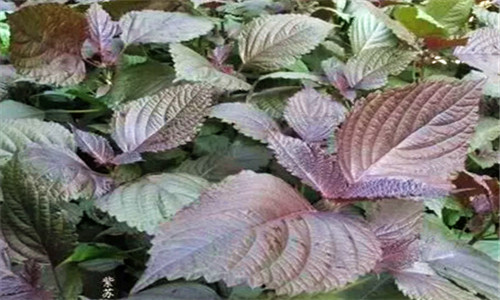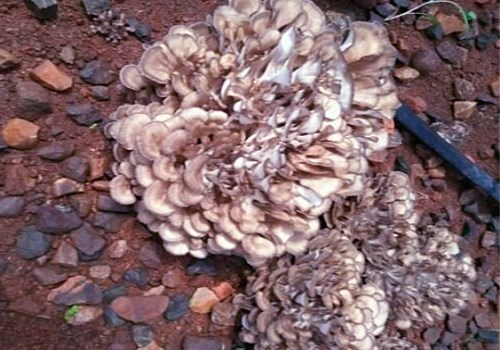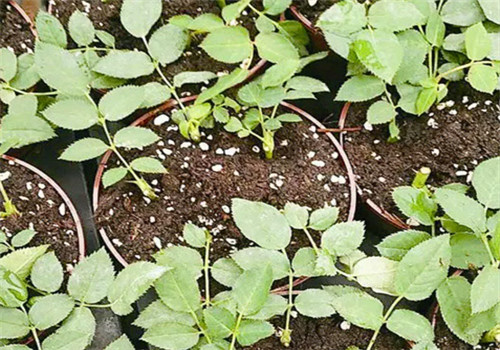What is the planting method and time of perilla? What are the precautions?
Perilla, also known as cinnamon, white perilla, red perilla, etc., has a special fragrance, is a multi-purpose plant, can be used as medicine, oil, spices, edible, high economic value. China has a long history of planting perilla, and perilla has a strong adaptability to the environment, so what is the planting method and time of perilla? What are the considerations, ?

When is the planting time of perilla?
Perilla sowing time is usually around March or April in spring, when the temperature begins to pick up, Rain Water is sufficient, in line with the requirements of perilla growth, so the emergence rate is very high. When sowing, we also need to pay attention to the way of sowing, the most common are sowing and strip sowing, sowing should be paid attention to is to gently press the sown seeds into the soil, and to sow more evenly, otherwise the emergence is not neat, increased the intensity of late management, and strip sowing needs to pay attention to ditching, each ditch empty line distance of about 20 to 25 centimeters, so as to facilitate later field operation.
II. Planting methods and matters needing attention of perilla
1. The planting method of perilla.
Perilla can generally be planted by furrow sowing, and some organic fertilizer should be applied in the soil before planting, but it should be fermented well. When sowing, there are now several rows of small ditches on the soil surface, with a depth of less than 1 cm and a distance of 10 cm between them. After that, water is watered in the trench, watering as much as possible to absorb enough water for the seeds, and then sowing seeds in the trenches with a seed density of 0.5 cm. Finally, the seed is covered with half a centimeter of semi-dry fine soil, and the sowing process is completed.
If the spring sowing weather is dry, the soil surface can be covered with a layer of plastic film after sowing, which can effectively keep heat and moisture, and then remove the film after emergence.
2. Matters needing attention in perilla planting
(1) soil
Perilla is very adaptable to the growth environment, but the choice of planting site is a basic condition for high yield of perilla, so we can choose the most suitable soil according to its growth habits. It is best to choose sand or loam with plenty of light, rich in organic matter and perfect drainage and irrigation system. It is important to pay attention not to plant in the very sticky soil, so that the growth of perilla will be poor.
(2) temperature
In fact, the cold resistance of perilla we have seen is also very good, but perilla is actually a warm plant, although it can grow at low temperatures, the growth rate and the quality of perilla will not be very good. In order to improve the yield and quality of perilla, we need to manage the temperature in the field when planting. The most suitable temperature for the growth of perilla is about 16 to 22 degrees. It can withstand low temperature, but the temperature should not be lower than one degree, otherwise it will stop growing or even freeze to death.
(3) Fertility and water
The root, stem and leaf of perilla can be used as medicine, our main purpose is to promote the growth of the whole plant, and the most important fertilization of perilla is base fertilizer, which is mainly based on farm rotten fertilizer, and the late topdressing is mainly nitrogen fertilizer. in its whole growth process, it generally needs to be fertilized three times, mainly according to the growth of perilla seedlings, in order to improve the yield of perilla. The second thing to pay attention to is water management. After sowing, the soil must be watered thoroughly, and then after perilla emerges, it is watered once, and then watered again after planting. Finally, watering and drainage are carried out according to perilla's water demand and rainfall.
(4) Diseases and insect pests
The most common disease in perilla is rust, which is caused by too much water in the field without timely drainage, which mainly harms the leaves of perilla, but the plant will also be affected by the disease. finally, withered and yellow slowly rotted, highly contagious, so it is necessary to pull out the diseased plants in time and disinfect them at the initial stage of the disease. Finally, sodium traps and Baume 0.3 degree stone sulfur mixture are used for prevention and control. The most common pests are beetles, moths and borer. We can use dimethoate EC, trichlorfon and fenitrothion to control these common pests.
What are the varieties of perilla?
Perilla includes two varieties: Perilla frutescens, also known as perilla, chicken crown perilla, and perilla, also known as wild perilla. Perilla frutescens is more cultivated in different places, and garden cultivation also has ornamental value.
Perilla is cultivated sporadically in all parts of our country, and the varieties used are farm varieties with a long history, which can be divided into red perilla and cyan perilla (green leaves) according to leaf color, and early, middle and late maturity varieties according to maturity. according to the mode of utilization, it can be divided into bud perilla, leaf perilla and ear perilla.
Time: 2019-04-06 Click:
- Prev

How to plant Grifola frondosa? Summary of six high-yield cultivation techniques of Grifola frondosa
Grifola frondosa, commonly known as Mushroom Mushroom, is a mushroom for both food and medicine. It is often wild around chestnut trees in summer and autumn. So how to plant Grifola frondosa? What are the environmental requirements for the growth of Grifola frondosa? The following is to introduce the six key points of high-yield cultivation techniques of Grifola frondosa. What are the environmental requirements for the growth of Grifola frondosa?
- Next

Rose cutting seedling raising technique: when is the best time for cutting? What are the ways to take root quickly?
The propagation of rose mainly includes cutting propagation, split propagation, striping propagation, seed propagation and so on, but the most commonly used method is cutting propagation. So when is the best time for rose cuttage? What are the ways to take root quickly? Next, I would like to share with you the techniques of cutting seedlings of next rose. When is the best time for rose cuttage?
Related
- Fuxing push coffee new agricultural production and marketing class: lack of small-scale processing plants
- Jujube rice field leisure farm deep ploughing Yilan for five years to create a space for organic food and play
- Nongyu Farm-A trial of organic papaya for brave women with advanced technology
- Four points for attention in the prevention and control of diseases and insect pests of edible fungi
- How to add nutrient solution to Edible Fungi
- Is there any good way to control edible fungus mites?
- Open Inoculation Technology of Edible Fungi
- Is there any clever way to use fertilizer for edible fungus in winter?
- What agents are used to kill the pathogens of edible fungi in the mushroom shed?
- Rapid drying of Edible Fungi

